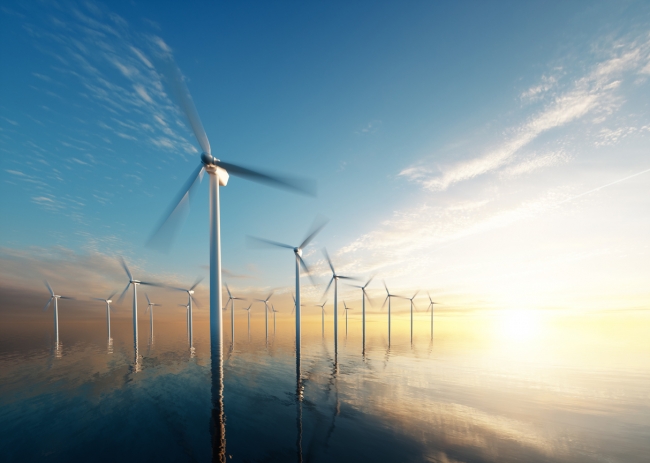4 minute read
Sustainability in Manufacturing – what should it mean to you?
What does sustainability mean to your business?
The world of manufacturing has been making significant strides towards more sustainable practices for some time now – driven by a decline in the availability of resources, a rise in the price of materials and manpower, and the awareness that competition is growing ever fiercer. For today’s manufacturers, continued commercial viability depends upon being adaptable to change. For this reason, sustainability is high on the agenda of any business keen to meet shifting customer expectations, lower their carbon footprint and ensure compliance with the efficiency standards set by new legislation such as the Carbon Reduction Commitment Energy Efficiency Scheme (CRC) and Energy Savings Opportunity Scheme (ESOS).
The importance of energy
At the heart of every manufacturing process is the energy that powers production, keeps machinery running and ensures buildings are safe, warm and well-lit. With energy accounting for a large proportion of a business’ annual costs, and with the energy structure around us changing at pace, it follows that sustainable business practices must now invariably include a more strategic approach to energy management. But for many businesses, the easiest energy-efficiency measures have already been taken – so what are the next steps?

A more sustainable approach to energy management can offer real payback to manufacturers / Picture: Getty/iStock
A more sophisticated approach to behaviour change
It’s well publicised that influencing user behaviours within an organisation is one of the biggest and cheapest ways in which a company can reduce its overall energy consumption. This covers all manner of activity, from switching off lights when leaving a room, to running educational programmes across the organisation. However, whilst it may sound like the simplest aspect of an energy efficiency plan, our evolving UK energy infrastructure means that we need to move the conversation on – from complete energy reduction, to becoming smarter about the times of day when usage must be reduced. And from the way change will affect your everyday business processes, to the way change will ensure your business continues to thrive as part of a hyper-connected, low carbon future.
Here are our top recommendations for a more sustainable approach to energy management.
1 – The ability to respond
Any energy manager will know that transmission and distribution costs are higher during peak consumption periods where the respective systems are under greater stress. Building flexibility into your processes so that you are able to move more electricity consumption to less expensive times makes huge economic sense. Alongside this, the ability to act quickly in response to a fluctuating wholesale market – consuming more when energy is cheaper, and less when it’s more expensive – is a highly effective way of keeping costs under control. This includes careful consideration over the times at which high-consuming equipment is used, as well as office behaviours.
2 – Technology that supports your ambitions
While the speed at which our energy system is changing could seem daunting to businesses who need to carefully balance budgets and reduce consumption, technology is keeping pace and provides a solution for better energy management. In the past, companies were reliant on user-led monitoring and targeting systems that profiled the impact of changing consumption patterns with a limited number of data inputs. It is now possible to work with systems that take real-time cost feeds from the wholesale energy market, along with specific site asset data, to make recommendations on how to optimise cost. Some come with little or no investment, so it’s worth taking a look – whatever your budget. To see how Kodak Alaris and P3P used technology to harness value from the energy market, why not read their case studies?

Kodak Alaris used a site optimisation solution to reduce energy costs by 11% / Picture: Ørsted
3 – Quantifying the case for change
When it comes to ensuring support for change, a fully costed outcome for each potential scenario is the best way to demonstrate how altering operational patterns can lead to commercial advantage. We worked with Kodak Alaris to do exactly that. Like many organisations, Kodak Alaris was eager to optimise their site but lacked the resource to analyse their consumption patterns in sufficient depth against a whole host of variables, from wholesale market prices to peak system costs and Demand Side Response (DSR) scheme returns. Our Site Optimisation solution was developed to do all of that for them automatically, taking market data feeds to produce optimal run schedules for the plant and making accurate, hourly operational planning a reality. By sticking to the recommended run schedules, Kodak Alaris reduced its energy costs by 11%, as well as cutting operational planning time. See the full case study here
4 – Integrating for impact
The best advice we can give when it comes to a more sustainable approach is: integrate. As we look to the future, the way businesses consume, generate and manage their energy will become integral to more and more of the decisions made and strategic actions taken by those businesses. For real bottom line impact, energy must rise up the organisational agenda and infiltrate all manner of operational activity. Finally, don’t forget your outward facing activity – keep your customers informed too. Consumers care about sustainability, so whether you’re taking a fresh look at the way you use energy, or choosing to buy it from 100% renewable sources, let them know you’re doing it well. It might just give you the edge over the competition.
